Introduction
Marketing has gained a new twist in the recent past. Initially, marketing was given an inward approach. Business units emphasised production. The main concern was to produce as much as possible and then look for the market. This has changed as consumers are becoming more aware of their needs. Technology has turned the world into a global village (Kotler 2003, p. 87). Information is available to both consumers and the manufacturing firms.
With limited trade barriers, a US firm can easily operate in the United Kingdom, while a Chinese businessperson can invest in the Kingdom of Saudi Arabia. There is no firm operating in a vacuum as the world is reduced into a smaller trading region. Consumers are also obtaining information about alternative products and where they can be found. Through the mass media, social media and other forms of communication, the consumer has become increasingly knowledgeable and very demanding (Falkow 2010, p. 100).
Analysis of Buyer Behavior
Buyer behaviour can best be understood by segmentation of the market. Market segmentation refers to the classification of customers based on their demographic differences. The consumer decision-making process is affected by cultural beliefs and practices. A marketer must understand a given community’s beliefs so that the products manufactured for them are designed to respond to their needs. Some communities do not eat pork. Targeting such a product to them could be considered offensive, and the business may eventually be forced to close down. Social status is another determinant of buyer behaviour. Those of higher social statuses are more sensitive to quality than the price of a product. They are seeking self-actualisation, and the products targeted to them should reflect this.
On the other hand, those of lower social classes pay more attention to quantity and price. A little upward adjustment in the commodity price would result in a mass shift to the next available substitute. Different market segments behave differently, and a marketer needs to understand each of them. After the market segmentation, a business would choose the target segment and design its product to align with their requirements. Armstrong (2000, p.36) asserts that buyer behaviour should be internalised if any marketer is to increase or even maintain the market share.
Importance of Buyer Behavior Analysis to Marketers
Marketing is a complex process that involves a series of activities, all aimed at making a particular brand or a business in general popularity in the market, experience growth in the market share and be in a position to withstand market competition hence ensure sustainability. The marketplace has become increasingly competitive, with more business units offering similar products hence becoming saturated in smaller markets.
The world has been turned into a global village, and with it, competition has been increased even further. A marketer is at the centre of all these changes. The entire business fraternity looks upon him to offer a solution that will ensure that the business is self-sustaining even in the face of stiff competition (Fried 2008, p. 26). To do this successfully, a marketer should first be in a position to define the target market for his/her products. After defining the target market, a marketer should then design his or her products to respond to the specific needs of that group, taking into consideration the demographics of the target segments.
A marketer needs to understand how this consumer segment makes a purchase decision, triggers of the purchase decision and the level of involvement in making purchases. There should be a deliberate effort to understand how consumers evaluate products before they make a purchase decision. It is also important to know the perception that a target market has towards a certain product and what could be done to maintain it if it is positive or revert it if it is negative. With this understanding, a marketer can approach the market with products that are not only able to satisfy consumers but also make evangelism out of them.
An evangelist customer would be a good ambassador to the brand as they would advocate for its purchase among the buyers. As a marketer, it is important to understand the forces that playoff on both the marketing department and the customer’s side in achieving the marketing objective. The diagram below shows this inter-relationship. The customer is the most important factor that the marketing department must understand. They should understand customer’s loyalty to the brand, their purchase decisions, cultural differences and the challenges involved in the purchase process.
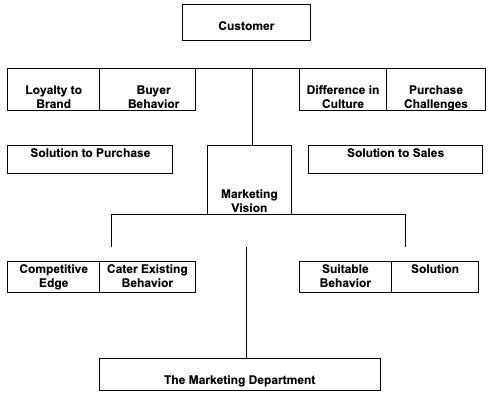
Types of Consumer Behavior
There are four types of buyer behaviour: complex buyer behaviour, variety seeking buyer behaviour, dissonance reducing buyer behaviour and habitual buyer behaviour. The model below illustrates the four types of buyer behaviour. They differ in the level of involvement in making the purchase decision and the perceived differences in the brand. Complex buyer behaviour and dissonance reducing buyer behaviour involve purchasing items requiring high involvement of the customer while variety seeking and habitual buyer behaviours involve the purchase of low involvement products.
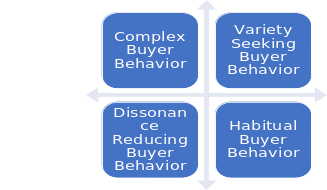
Complex Buyer Behaviour
Complex buyer behaviour takes place when one needs to buy an item that has a heavy financial implication. The buyer needs to go through various stages before and after making the purchase. Need recognition is the first stage. The buyer must develop the need for a particular product. The next step is the information search where the consumer gathers relevant information about the product. The buyer will then evaluate the available alternatives and then make a purchase decision. Finally, there will be a post-purchase behaviour after the consumption of the purchased product. A marketer must understand how a consumer behaves at each stage and how s/he can attract such a customer to the brands of his company.
Variety Seeking Buyer Behavior
This is a low involvement buyer behaviour where there is a significant brand difference in the product purchased. The buyer has various brands to choose from, and the existing brands offer differing levels of satisfaction. This is always the case with products that are purchased frequently.
Dissonance Reducing Buyer Behavior
This is a high involvement in buyer behaviour. It takes place when the buyer has very limited time to make a purchase, which is of serious financial implication. S/he has limited time to conduct a comprehensive information search and therefore aims at getting an item that will be closest to what s/he will be looking for. This will help reduce post-purchase dissonance that may arise by purchasing a substandard product.
Habitual Buyer Behavior
This is a low involvement buyer decision made when purchasing a product that is frequently used. The financial implication of such a product is less serious, and there is no perceived difference in the various brands in the market. A marketer needs to understand which buyer behaviour plays off in their target market. Then they should design a marketing program that will be able to respond to the needs of the targeted segment.
Models of Consumer Choice
Cognitive Model of Consumer Choice
Cognition is a mental process that involves understanding and remembering a given piece of information. Cognitive consumer choice refers to evaluating the available alternatives and making a decision based on the level of possible satisfaction that can be generated from each. It entails arranging products in a hierarchical order and giving preference to those items that result in more satisfaction. Cognitive consumer choice detaches itself from emotions.
It bases buying decision on a factual basis and not on glamour that a product may be packaged or the level of promotion that it might have been given. As a marketer, one should understand that such buyer behaviour might demand more than a well-structured marketing design. It would demand that the product meets the required standards in the market for it to be attractive. A consumer who is satisfied with a product would always remember the product and is more likely able to come for more whenever he or she goes shopping. Blackwell and Miniard (2006, p. 11) argue that a customer would always remember the exact location where he/she purchased an item that had a thrilling experience.
Similarly, such a customer would recall places where they purchased items that brought them post-purchase dissonance. The brand may act as a way of determining the choice of a customer. Consider the following brands for a consumer looking for a luxury car. The consumer is likely to go for the Benz because of the strength of the brand. Other brands such as BMW 1series, Lexus CT and Audi A3 are also trusted in the market.
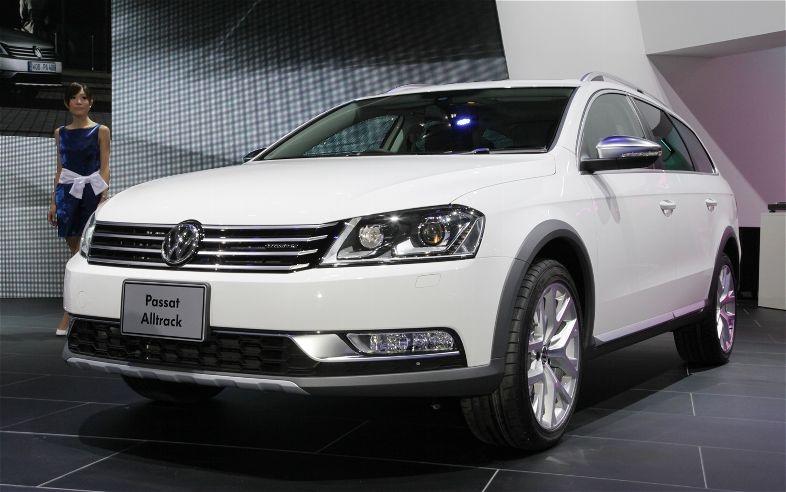

Reinforcement Model of Consumer Choice
A Consumer always undergoes various stages before making the final decision as regards to purchase of a product. The first stage is problem recognition, where they develop the desire to have the product (Kurtz 2008, p. 34). The buyer then goes through the process of information search before evaluating the available alternatives. A marketer should be able to attract the attention of the consumer at the information search stage.
The reinforcement model maintains that a consumer needs motivators to settle for a particular product. There must be a deliberate effort by the marketer to attract the customer’s attention when he or she is conducting information search. This attraction could be in the form of a decent display of a product that would be able to draw the attention of a passing customer (Evans 2010, p. 121). Alternatively, a marketer could decide to conduct awareness creation within the targeted market.
This aims to ensure that the customer’s attention is attracted to the product as early as the first stage of problem recognition. Reinforcement model is a valid tool in determining the level of patronage that a business may experience over a given period. Therefore, this calls for the development of stimuli that would draw a customer to the shop. The model below shows how customer attraction can be achieved. The four forces work together to lead to customer attraction. This is very common in the sale of goods of ostentation such as cars and jewellery.
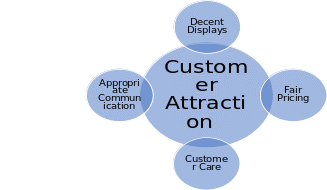
Habit Model of Consumer Choice
Human beings are rational. With the ability to reason and make judgments about products, marketers must make an effort to develop marketing structures that would modify consumer behaviour (Kabani 2009, p. 46). Individual’s psychological factors have a great impact on the behavioural aspects of a consumer. Age of an individual would determine the habit. A youth would behave differently from an ageing man. The desires of youth would make him behave differently from other stages of a life cycle (Giddens 2009, p. 51). At this age, one is very active, and the product targeted at them should reflect this. A child would also behave differently.
Therefore, they require different products and approaches when conducting awareness creation. One’s personality and gender also playoff in determining customer behaviour. Some view themselves as above certain items. Not everyone likes jeans as a form of dress. Their perception towards it makes them the wrong candidate for this product, and therefore a marketer should avoid targeting them with such a product. Some items carry emotional reflections to varying consumers. Some products, such as specific music, could trigger certain emotions that make such individuals develop the desire to possess it. It may not be easy to determine what is in the mind of a consumer.
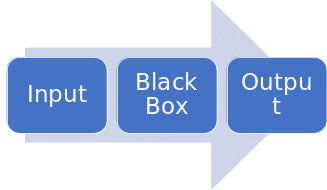
Inputs are external factors that may have effects on the consumer decision-making process. They include factors such as pricing, displays, customer service and awareness creation. The black box is the mind of the consumer. After internalising external forces, the mind would make a decision based on the item to be purchased. The final decision would be the output.
Coca Cola: A Brand Imbued with Emotional Values
Cunningham (2000, p. 15) stated that brand is the most important asset of any given business unit. A brand is a tag, a symbol, a name or image with which a given business unit or a given product is identified. Marketing involves making brands of a given business or product stronger in the market. This would enable the product to compete favourably in the market (Gorchels 2004, p. 102). A product imbued with emotion will not only attract the target market but also ensure sustainability in the end. This can be illustrated by taking the brand Coca Cola.
Coca Cola is one of the top brands in the world of beverages. It has maintained market lead despite stiff market competition from firms like Pepsi Cola. This super brand has continued attracting more customers in various regions globally with its beautifully structured adverts on television commercials and social media like YouTube, Facebook and Twitter. Coca Cola is a family name in almost all countries in the world. Del reports that anyone who is above 16- regardless of the country where they must have either used or heard of this brand (Del (2005, p. 123). The brand has other sub-brands operating under its umbrella, like Fanta, Dasani, among a host of other sub-brands.
Marketers of this brand have successfully designed various advertisements, which they have posted in various mass media. One particular advert is imbued with emotion as it depicts this product as a source of happiness (Kimmel 2007, p. 65).
Coca-Cola Summer Commercial 2011, Open Happiness
This advertisement is very artistic. It starts with a young couple lying on a beach. They are bored and look sleepy. This is contrary to what they were seeking when they came to the beach. They wanted a place where they could relax and feel happy. Suddenly, this couple is joined by other youths of the same age. They bring with them a completely new atmosphere.
So happy and full of life, they attract the attention of the couple, which joins them. The couple is introduced into a huge bottle of Coca Cola, and when they emerge out of it, they are as happy as the other group of youths. This advertisement is meant to attract youths and young adults. The rock music in the background is a deliberate attempt to attract consumers of this age. The message is constructed so that it brings out the idea that a bottle of this drink brings out real happiness to those who are bored.
The advertiser intended to reach to this target market, convince them that Coca Cola is full of happiness and that it brings out the love in your partner in the best way possible. The consumers’ interpretation of this is the same as what the advertiser intended for it. The consumers see happy individuals, each with a bottle of Coca Cola, and they are convinced that happiness is in this drink.
The youths in the beach at summertime having fun and cheering each other is a sign that this drink is suitable for parties and that it brings out the best in a person. However, complete avoidance of the middle-aged and the ageing group is a little discriminatory. It makes this group of individuals feel that this product is not meant for them. This can reduce sales among this target market. The group below 16 years of age may not also identify with this ad, which lowers sales among this group.
This notwithstanding, the advert coherently focuses on the idea that the brand Coca-Cola is sensitive to consumers’ demands. It can convince customers that the brand has all the happiness that one may need. The marketing team has structured other commercials to reach out to other target markets. The following caption illustrates the emotional inspiration that this brand generates.
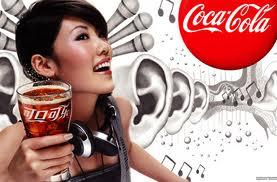
This ad is considered successful. It is not only entertaining but also highly persuasive. The music, the background, the happy, healthy youths, the cool blue waters, the wonderful colours and the atmosphere created by all this leaves the viewer yearning to be part of it. Even the target segment that would have felt ignored by this ad would admire it, making them be pool members. The brand image is perfectly brought out in this advert. The brand attracts emotion of the viewers by communicating to this target market, the value that is derived from its consumption. This has made it attract a customer base that has enabled it to sustain itself in the face of competition. It has worn customer loyalty in many regions across the world. It has turned out to be the preferred soft drink (Wayne & Hoyer 2008, p. 43).
The youth makes the largest market share for this product. They use it when on picnics when partying or just relaxing after a long day out. This target group is specifically known for their impulse buying, making them a very attractive market segment (Thomases 2010, p. 21). Though they have limited financial base because they rely on their parents and guardians for financial support, the rate at which they are involved in marries making makes this brand viable to them. Coca Cola has successfully managed to capture this group’s attention by positioning this product as a source of happiness. This is what youths look for. They need something that can make them happy and feel appreciated (Klein 2009, p. 78). This is what the product offers.
Conclusion
Marketing has gained popularity over the past few decades. Market competition has moved a notch higher, and firms are struggling to stay in the competition. Unlike before, when the emphasis was laid on mass production, the current market situation demands that a business comprehends the market trends. Buyer behaviour analysis is a concerted effort to understand buyer behaviour by marketers to make a decision that would enable such a business to capture a sustainable market share.
Buyer behaviour can best be understood by conducting market segmentation. When a market is segmented based on demography, a marketer would be able to develop a marketing strategy that would be sensitive to that particular market. It becomes easier to determine the behaviour of each segment.
Cognitive buyer behaviour involves purchasing items with greater financial impact and therefore requires high involvement in decision-making. Like cognitive buyer behaviour, dissonance reducing behaviour requires high involvement in the decision-making process, though within a limited timeline.
List of References
Armstrong, G 2000, Marketing: An introduction, Prentice Hall, New Jersey.
Blackwell, D & Miniard, W 2006, Consumer Behavior, Thompsons, South Western.
Cunningham, J 2000, The stress management sourcebook, Prentice Hall, Los Angeles.
Del, I 2005, Consumer Behavior, Tata McGraw Hill, New York.
Evans, D 2010, Social Media Marketing an Hour a Day, Wiley Publishing, Indiana.
Falkow, S 2010, Social Media Strategy, Expansion Plus, New York.
Fried, R 2008, Stress management for success in the workplace, Lulu.com, Washington.
Giddens, A 2009, The consequences of modernity, Blackwell Publishers, Malden.
Gorchels, L 2004, The Manager’s Guide to Distribution Channels, McGraw-Hill, New York.
Kabani, S 2009, The Zen of social media, An Easier Way to Build Credibility, Generate Buzz, and Increase Revenue, Ben Bella Books, Dallas.
Kimmel, R 2007, “Evian’s Caswell Brand week”, ‘Fill With Care’ Promotes Lifestyle, Well Being, 8/20/2007, Vol. 48 Issue no. 30, pp 42.
Klein, H 2009, Customer Engagement Strategies, The three keys to engaging C-suite executives, Lowell House, New York.
Kilter, P 2003, Marketing Insights from A-Z: 80 Concepts for every manager, JohnWiley and Sons, New York.
Kurtz, D 2008, Contemporary Marketing: Designing Customer Oriented marketing Strategy, Cengage Learning, New York.
Thomases, H 2010, Twitter Marketing: An Hour a Day: Wiley Publishing, Indiana.
Wayne, D & Hoyer, M 2008, Consumer Behavior, Cangage Learning, South Western.
